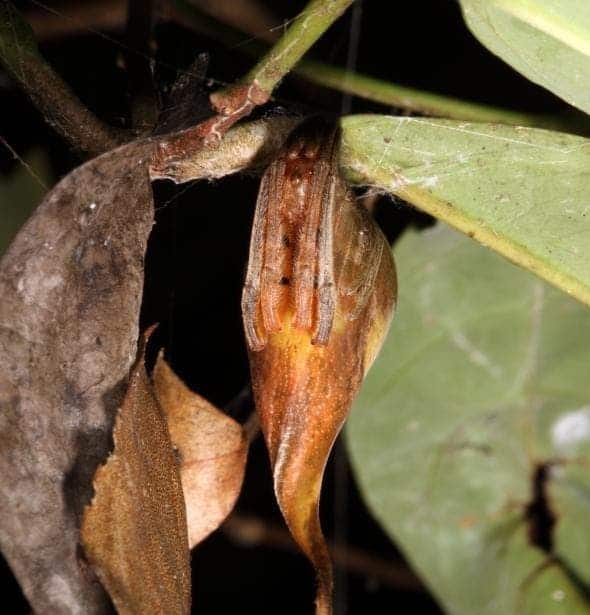In China’s Yunnan rainforest, one exploring arachnologist came across one of the most peculiar spider species ever. Completely new to science, this species dazzled everyone by masquerading as a leaf.

The spider was found by Matjaz Kuntner from the Smithsonian Institution and the Evolutionary Zoology Laboratory in Slovenia. Kuntner was trekking through the rainforest at night when he caught a spiderweb under the light of his headlamp. Following the silk with his gaze he eventually saw the web connected a leaf to a tree branch. It took a while before he realized the leaf right in front of him was actually a spider.
“I was so taken aback,” Kuntner told National Geographic.
The new orb-weaving spider is not only a master of disguise — it also is an expert decorator, carefully using silk to attach leaves to tree branches. The spider then hides among the branches, inconspicuous and still as if it were a real leaf.
“A masquerade is much more likely to be successful if there are lots of examples of their disguise around them,” said John Skelhorn, an entomologist who studies masquerading at the United Kingdom’s University of Newcastle-Upon-Tyne.

Masquerading, an evolutionary tactic many animals employ to resemble uninteresting objects, can be very useful for both deceiving predators or gaining access to prey. Unlike camouflage, which is meant to deceive the senses by appearing invisible — think of a chameleon blending with the background — masquerading is about tricking the brain into thinking it’s looking at something else. Scientists have come across all sorts of masquerading animals, some more interesting than others. For example, the caterpillars of Brimstone and Early Thorn moths have a handy defense. Instead of looking like juicy, green treats, they resemble brown, knobby twigs.
While masquerading behaviour has been mostly witnessed in insects, plants, birds and fish, there are instances where this also occurs in arachnids. Some resemble flowers, dead twigs, bark or even bird droppings, but the newly found spider from the Poltys genus is the first to pretend to be a leaf.
Strikingly, the spider has evolved brownish green colouring and a long necklike structure that connects the head and the cheat to its abdomen. This lends it a teardrop shape, very similar to the dead leafs on the ground which the spider collects and sticks them to branches.
Only two specimens have been found so far: an adult female and a juvenile. Genetic analysis made thus far suggests we’re dealing with a new species but there’s more to do before the scientists state this with certainty.
Findings appeared in the Journal of Arachnology.



